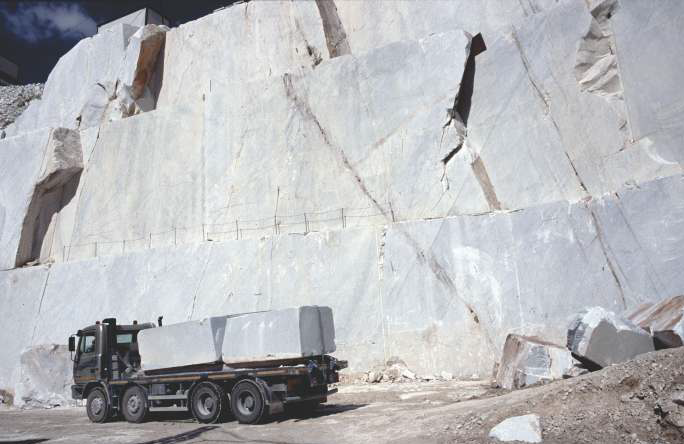STONE IMPORT IN CHINA
 Author: STC
Author: STC
Article Date: 01.01.2018
Building industry occupies a significant place in the economy of China. World’s largest populated country showed a market slow down in 2015 as there was decline in growth rate in building industry for the first time in several years.
China constructed around 1.8 billion sq m per year between 2010 to 2014. This figure is equivalent to 1/3rd of global production and created a demand for 55% of global cement production. In other words, China produced an area equivalent to total construction in Spain or United Kingdom each year.
Most of the activity (around 85%) is concentrated in the eastern coastal states. Nevertheless, higher growth has been noted in less important cities (Chengdu, Chongqing, Changchun) which is detrimental to the main cities (Beijing, Shanghai), which indicates change in the future situation.
2015 was difficult for the construction industry in China and represented a split from the historical trend over the last decades. The new economic measures and the changes in criteria for concession of real estate financing generated a reduction in demand. All companies and banks involved in the industry suffered decline in a process of adjustment to the new reality, after decades of vigorous growth.
According to “Global Construction Perspectives” growth in the Chinese construction industry will fall to 3.9% annually from 2015 to 2020, 4.8% from 2020 to 2025 and 5.2% from 2025 to 2030.
In spite of the projected rate for 2015 (fall of 60%) the expectation was that it will be less, mainly in the eastern coastal cities, where a large number of works have been interrupted.
Real Estate market Consultants in China indicated a positive trend and stabilization in 2016. China will remain the largest construction market in 2030, India and USA should account for 57% of world’s total building construction. With the projected growth, Chinese building industry envisages large projects and a positive outlook. The age group changes in urban population indicate continuity and sophistication in demand which would bring good possibilities to companies supplying construction materials including steel, cement and stone.
The government has been stimulating development in central-western regions through creation of infrastructure and industrial incentives. A railway project is being studied, with bullet trains, connecting to Europe through Asia.
The intense migration to the cities and growth in urban per-capita income will continue to feed demand. More than half the population today lives in cities and this number should increase to 70% in 2020. In October 2015, the government announced the end of its birth control policy (one child per couple). The population increase will provide a positive impact on the labour force at around 2030, which will generate a new growth wave. The expectation is to create 8.5 million new housing constructions by 2030.
The percentage of the Chinese population - 65 years old or greater will reach 20% by 2030 and 30% in 2050. This will increase demand for hospitals and health treatment centers. There will be a need to build new housing units, as well as refurbishing and modernizing the country’s 24,000 hospitals. This represents an investment of US$ 1 trillion by 2020.
India had been exporting granite and marble blocks as well as finished slabs and tiles to China during the last decade. During the world recession year 2009, China imported raw-blocks worth 8,062,000 tonnes which increased gradually to 17,522,000 tonnes in 2013 and then dropped down to 12,247,000 tonnes in 2015 and 12,342,000 tonnes in 2016. The finished import was 222,000 tonnes in 2013, gradually reducing to 44,000 tonnes in 2015 and 48,000 tonnes in 2016. However, there was an increased domestic consumption of 22.180 million tonnes and 23.351 million tonnes between 2013 and 2016 in China.
Reduction in demand after 2015 in China was mainly due to
Recession in construction industry in China
Reduced demand of stone slabs, tiles and countertops in USA
Both these factors also reduced the import of raw-blocks and finished products from India.
With projected growth in building industry, per capita consumption in urban cities and increase in standard of living resulting in increased use of stone for flooring, countertops and other applications in China would definitely increase export from India especially of its exclusive varieties. However, Indian companies shall have to be very competitive as there are existing varieties of marble, granite and sandstone in China, though they do not have fascinating colours and patterns. China would still remain the largest importer of blocks not only from India, but also from Turkey, Brazil, Portugal, Greece, Norway and Italy. Indian companies can definitely invest in setting up warehouses as well as production facilities in coastal areas very close to Beijing and Shanghai. They can also set up joint venture projects so that finished products can be exported to Japan and Philippines. A strategy for producing finished products with quality and precision has to be developed.